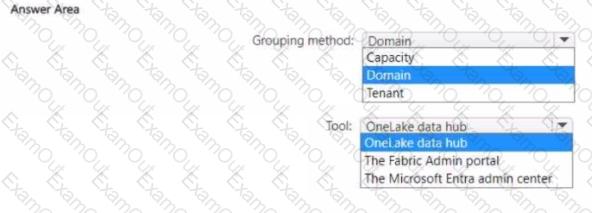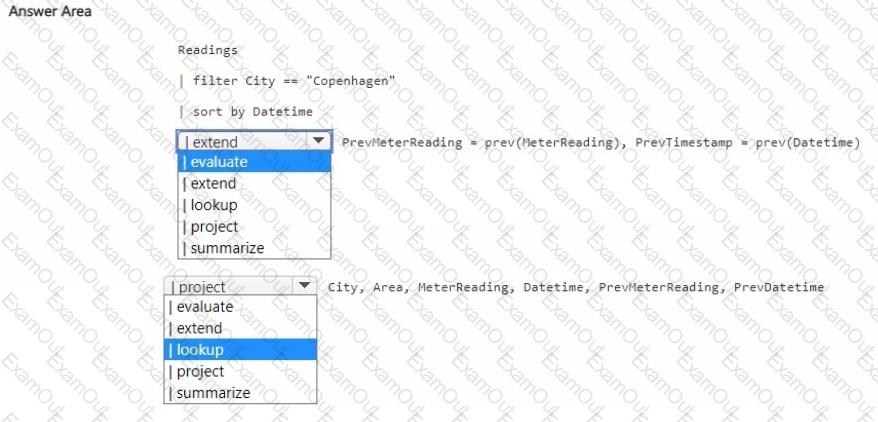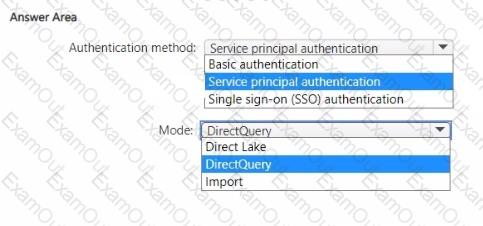You need to recommend a solution to group the Research division workspaces.
What should you include in the recommendation? To answer, select the appropriate options in the answer area.
NOTE: Each correct selection is worth one point.

You have a Fabric tenant.
You are creating a Fabric Data Factory pipeline.
You have a stored procedure that returns the number of active customers and their average sales for the current month.
You need to add an activity that will execute the stored procedure in a warehouse. The returned values must be available to the downstream activities of the pipeline.
Which type of activity should you add?
You have a KQL database that contains a table named Readings.
You need to query Readings and return the results shown in the following table.

How should you complete the query? To answer, select the appropriate options in the answer area.
NOTE: Each correct selection is worth one point.

You have a Microsoft Power Bl report named Report1 that uses a Fabric semantic model.
Users discover that Report1 renders slowly.
You open Performance analyzer and identify that a visual named Orders By Date is the slowest to render. The duration breakdown for Orders By Date is shown in the following table.

What will provide the greatest reduction in the rendering duration of Report1?
You are creating a semantic model in Microsoft Power Bl Desktop.
You plan to make bulk changes to the model by using the Tabular Model Definition Language (TMDL) extension for Microsoft Visual Studio Code.
You need to save the semantic model to a file.
Which file format should you use?
You have a Fabric tenant that contains a lakehouse.
You are using a Fabric notebook to save a large DataFrame by using the following code.

For each of the following statements, select Yes if the statement is true. Otherwise, select No.
NOTE: Each correct selection is worth one point.

You need to migrate the Research division data for Productline2. The solution must meet the data preparation requirements. How should you complete the code? To answer, select the appropriate options in the answer area
NOTE: Each correct selection is worth one point.

Which type of data store should you recommend in the AnalyticsPOC workspace?
What should you recommend using to ingest the customer data into the data store in the AnatyticsPOC workspace?
You need to design a semantic model for the customer satisfaction report.
Which data source authentication method and mode should you use? To answer, select the appropriate options in the answer area.
NOTE: Each correct selection is worth one point.











